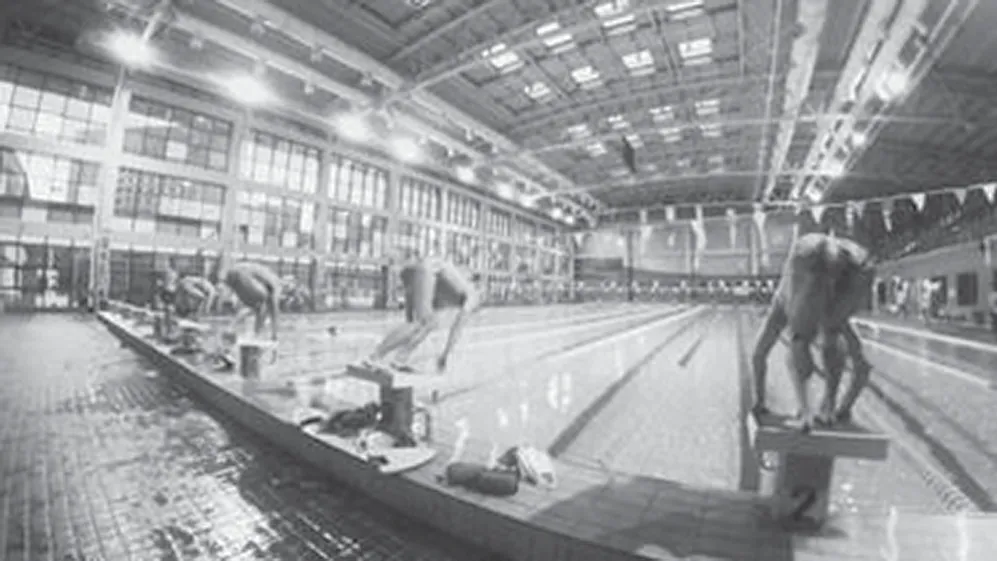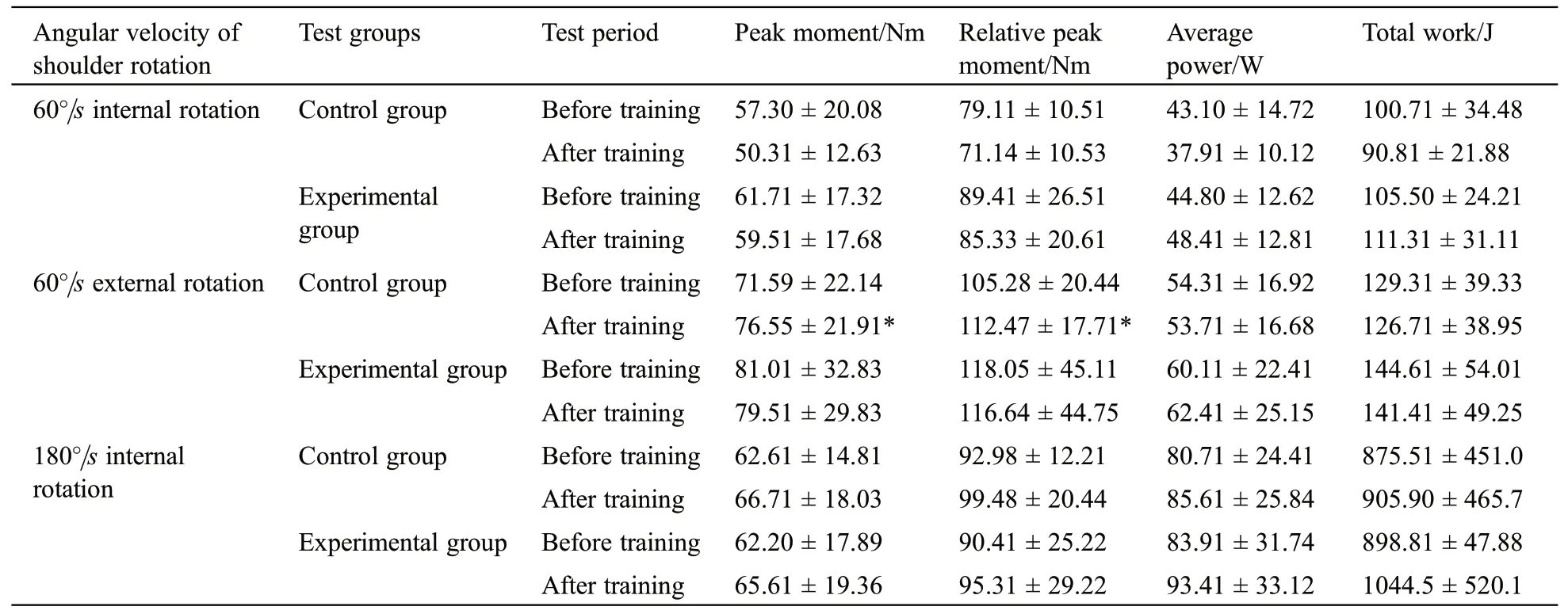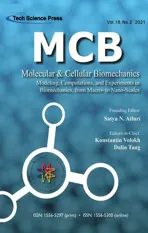Study on the Effect of PNF Method on the Flexibility and Strength Quality of Stretching Muscles of Shoulder Joints of Swimmers
2021-04-25BoqingLiXiaolongBaiandYongliZhu
Boqing Li,Xiaolong Bai and Yongli Zhu
Physical Education College, Yunnan University, Kunming, 650500,China
ABSTRACT In the process of swimming,the shoulder joint will be damaged when the arm is stroking.To reduce the injury of shoulder joints and improve the speed of stroke,it is necessary to train the flexibility of shoulder joints.This paper briefly introduced the concept of shoulder joint and flexibility and then explained the traditional stretching training method and proprioceptive neuromuscular facilitation(PNF)stretching method.Then,taking 20 college team swimmers of Yunnan University as the subjects,the comparative experiment of the traditional and PNF stretching methods was carried out.The results showed that the shoulder rotation index of the athletes after the use of the PNF stretching method was significantly lower compared with the traditional stretching method; under the PNF stretching method, the average power and total work of shoulder joints significantly improved in the highspeed external rotation, and the performance in the 50 m freestyle also significantly improved.
KEYWORDS Swimming;shoulder joint; proprioceptive neuromuscular facilitation; flexibility
1 Introduction
In the 21st century, with the rapid development of science and technology, people’s life is becoming more and more convenient; however, the accelerated pace of life makes people lack exercise, which leads to the hidden dangers of various diseases [1].To improve physical fitness and get rid of sub-health, in addition to the daily balanced diet, it is also necessary to maintain enough exercise.There are various forms of exercise to maintain the amount of exercise, such as long-distance running, rope skipping,swimming, etc.These exercises all involve shoulder joint activities, especially swimming [2].In the conventional stroke, the arm stroke usually makes the arm make a circular or semicircle trajectory, which requires the participation of the shoulder joint and its surrounding muscles.Therefore, swimming can exercise the shoulder joint to a certain extent, but at the same time, it will also cause damage.The shoulder joint, as the structure with the largest range of motion in the human activity structure, plays an important role in daily life and training.Especially for swimmers, once the shoulder joint is damaged, it will directly affect the standardization of arm stroke and then affect the stability of the forward movement.Not only will the performance be reduced, but also the non-standard stroke will increase the damage, leading to a vicious circle [3].The stability training of shoulder joints can improve the strength of shoulder joints.Zhou et al.[4] studied a robot ankle and foot system based on proprioceptive neuromuscular facilitation(PNF)for the rehabilitation treatment of stroke patients and verified through the comparative treatment experiment that the PNF method was more effective than the passive stretching method.Junior [5] activated Golgi organs through the submaximal contraction of agonists to promote relaxation reflex.After that, a control experiment was conducted on subjects with hamstring atrophy.The results showed that PNF could effectively treat hamstring muscle atrophy, with a lower treatment cost.Behm et al.[6] compared the effects of static stretching, dynamic stretching, and PNF stretching on exercise ability, range of motion, and injury prevention and found that PNF stretching could improve sports ability, range of motion, and injury prevention.This paper briefly introduced the concept of shoulder joint and flexibility and then explained the traditional stretching training method and PNF stretching method.Then, taking 20 college team swimmers from Physical Education College of Yunnan University as the subjects, the comparative experiment of the traditional stretching and PNF stretching method was carried out.In the comparative experiment, the control group adopted the traditional stretching method, while the PNF stretching method adopted the PNF stretching method.The subjects in the two groups took corresponding stretching training at 8 am on Tuesday, Thursday, and Saturday before swimming training, for six weeks.Moreover,they jogged for ten minutes before the stretching training.
2 Methods
2.1 Experimental Subjects
In this study,20 swimmers from the school team in Physical Education College of Yunnan University were tested using the PNF stretching method.The basic information is shown in the Tab.1.The subjects were all males.Their height fluctuated around 1.81 m.The average age of the subjects was 21 years old,and the weight was about 80.3 kg.Moreover,they had no injury in the past three months.The twenty swimmers were randomly divided into two groups, one group as the control group, which exercised the flexibility of the shoulder joint with the traditional stretching method, and the other group as the experimental group,which exercised the flexibility of the shoulder joint with the PNF stretching method.

Table 1:Basic information of testers
2.2 Experimental Equipment
The main equipment needed in this experiment included isokinetic dynamometer (IsoMed2000,Germany) [7], which was used for testing the strength level of shoulder joint muscles before and after stretching exercise, stopwatch, which was used for testing the swimming speed of athletes in the swimming pool before and after stretching, and towel and tape, which was used for testing the shoulder rotation index of athletes before and after stretching.
2.3 Experimental Project
(1)The training steps of the traditional stretching method[8]:the trainee sat on the ground with his back towards the auxiliary staff,interlaced his five fingers on the back of his head,and bent his elbows.After that,the auxiliary staff behind the trainee held the elbows of the trainee and slowly pressed backward until the maximum extent of extension.The action was kept for 20 s.After 5 s of relaxation, the elbows were stretched as before for 20 s, followed by 5 s of relaxation.The process was repeated for 15 times.
(2)Training steps of the PNF stretching method[9]:the trainee sat on the ground with his back towards the auxiliary staff,interlaced his five fingers on the back of his head,and bent his elbows.The elbows were pressed backward slowly in the traditional way until the trainee felt moderately uncomfortable.After keeping the action for 10 s,the auxiliary staff continued to apply force,and the trainee controlled the shoulder muscle to exert force to resist the external force from the auxiliary staff.After 6 s,the shoulder relaxed.The trainee applied force to press the elbows backward again.The trainee controlled the shoulder muscle to exert force,not resisting the external force,but for extending the shoulder to the largest extent.The extension was kept for 5 s.The above process was repeated 15 times.
(3)Shoulder rotation index test items[10]:after reversely grasping the towel with both hands,the arms were straightened,the arms were controlled to pass before the chest and over the head,and rotated to close to the back as far as possible.In this process,the arms were kept straight,and then a tape measure was used for measuring the length between the thumb of both hands and the length between the outer edge of the shoulder peak;the difference between the former and the latter was the shoulder rotation index.
(4)Shoulder muscle strength test item:the subjects warmed up the shoulder joints and then sat on the isokinetic dynamometer.The upper arms were fixed at the rotation sensors.Before the test,the subjects were required to carry out the adaptability test according to the test angle under the sub ultimate strength [11].During the test, the motion direction of the shoulder joints was internal rotation and external rotation.Under each motion direction, the test was carried out under two speeds, 60°/s and 180°/s.During the test,the maximum force of shoulder joints was ensured, and the test of each direction and speed was repeated ten times.
(5)Swimming speed test items:the subjects firstly warmed up for 15 min to prevent accidents such as cramps during the test.The subjects did their best to do the 50 m freestyle,and the stopwatch was used for timing.Fig.1 shows the situation of the subjects in the freestyle test.

Figure 1:The swimming test for subjects
After the subjects were divided into a control group and an experimental group, the shoulder rotation index, shoulder joint muscle strength, and swimming speed were tested according to the above test items.One week after the test, the control group was trained with the traditional stretching method, and the experimental group was trained with the PNF stretching method.The training time was 8:00 a.m.on February, Thursday, and Saturday of each week.Before the training, 10 min of jogging was carried out.After six weeks of training, the control group and the experimental group stopped training for one week,and the three tests they received before training were conducted again.
2.4 Mathematical Statistics
The collected data were input into Excel software,and the single factor variance test was carried out the data using SPSS [12].When the value of p was greater than 0.05, it meant that there was no statistical difference between the comparison objects.
3 Results
Before and after stretching training, the shoulder rotation index of the experimental group and the control group were tested using the towel and tape measure for measuring the flexibility of the shoulder joint.The results are shown in Tab.2.Before stretching training, the shoulder rotation index of the control group and the experimental group were 8.78 ± 2.31 cm and 8.66 ± 1.95 cm, respectively, and the p-value was 0.87, more than 0.05, indicating that there was no significant difference in the shoulder joint flexibility between the two groups before stretching training.After training, the shoulder rotation index of the control group decreased to 8.55 ± 2.27 cm, but the p-value was 0.75 compared with that before training, i.e., the difference was not obvious; the shoulder rotation index of the experimental group was reduced to 2.68 ± 1.66 cm, but the p-value was 0.01 compared with that before training, i.e., there was a significant difference; the p-value in the comparison of the shoulder rotation index between the two groups was 0.01, i.e., the difference was obvious.The results showed that the flexibility of the shoulder joint in the control group was not significantly improved after the traditional stretching training, while the flexibility of the shoulder joint in the experimental group significantly improved under the training by the PNF stretching method and was significantly different with that in the control group.

Table 2:The shoulder rotation index of the control group and experimental group before and after stretching training
The shoulder joint low-speed and high-speed muscle strength test was carried out on the control group and experimental group using the isokinetic dynamometer.The final results are shown in Tab.3.The shoulder joint motion at a speed of 60°/s was a slow-speed motion, and the absolute strength of the shoulder joint was mainly measured.The measured results included peak moment, relative peak moment,average power, and total work.In the slow-speed shoulder joint movement, the movement direction was internal rotation(flexion) and external rotation(extension).The specific data are shown in Tab.3.

Table 3:The isokinetic muscle strength test results of the control group and experimental group before and after stretching training

Note:* indicates that the p-value is smaller than 0.05,i.e.,there was a significant difference between the data before and after training.
Comparing the data before and after training in different groups,it was found that the parameters related to the shoulder joint internal rotation muscle strength in the control group and experimental group before and after training had no significant change, while the peak moment and relative peak moment of the control group increased significantly in the shoulder joint external rotation test.In the high-speed shoulder joint movement, the muscle strength parameters of the control group and experimental group had no significant change before and after training in the internal rotation test, but the average power and total work of the shoulder joint movement in the experimental group significantly increased in the external rotation test.
The ultimate goal of the shoulder joint stretching training is to improve the flexibility of the shoulder joint, prevent injury during swimming training, and thus enhance swimming performance.Tab.4 shows the 50 m freestyle performance of the control group and experimental group before and after the traditional and PNF stretching methods.It was seen from Tab.4 the swimming performance of the control group and experimental group was 65.84 ± 8.11 s and 66.98 ± 7.95 s respectively before the stretching training; the p-value in the comparison of the two groups was 0.77, more than 0.05, indicating that the swimming performance of the two groups was similar before the stretching training.After training, the swimming performance of the control group decreased to 63.55 ± 5.27 s, and the p-value was 0.76 compared with before training, i.e., the difference was not obvious; the swimming performance of the experimental group decreased to 59.88 ± 6.66 s, and p-value was 0.01 compared with before training, there was a significant difference; the P-value in the comparison of the shoulder rotation index between the two groups was 0.01, i.e., the difference was obvious.It was seen from Tab.4 that the swimming performance after the traditional stretching training improved, but the change was not significant; after using the PNF stretching training,the swimming performance significantly improved.

Table 4:The 50 m freestyle performance in the control group and experimental group before and after stretching training
4 Discussion
Swimming can effectively exercise the heart and lung function of the human body,which is an aerobic exercise.As the water resistance is far greater than the air resistance,and the heat absorption performance of the water body is excellent, the human body can consume a lot of body heat more comfortable when swimming to keep fitness [13].Swimming styles include freestyle, breaststroke, butterfly, etc., and most of them require arm stroke.For professional swimmers, long-term and high-intensity training will make the arm stroke very frequent,which will eventually damage the shoulder joint,affect the stroke action,and reduce the swimming performance.The better the flexibility of the shoulder joint is,the higher its resistance to injury is,and the higher the strength of the stroke is[14].The way to improve the flexibility of the shoulder joint is usually to stretch the shoulder joint.Although traditional static stretching and dynamic stretching can improve flexibility to a certain extent, static stretching will reduce muscle elasticity and affect joint force.Dynamic stretching cannot fully exercise the human body due to the stretch reflex mechanism.The PNF stretching method [15] proposed in this study combined the static stretching with the dynamic stretching and added the step of actively controlling muscle force to avoid the shortcomings of the two stretching methods.
The reasons for the above results are as follows.The PNF stretching method changed the original static stretching process into active-passive alternation by stimulating the nerve muscle,thus avoiding the elastic reduction caused by the single static stretching and the continuous myotatic reflex caused by dynamic stretching.In the PNF stretching method, the initial static stretching step made the muscle tighten gradually.When it was tightened to the peak value for more than 6 s, reflective relaxation generated,which increased the stretching limit of muscle; later, in the stretching process, the trainee controlled the muscle force to resist the external force of the auxiliary staff.At that moment, the muscle is in the reflective relaxation state, and controlling the muscle contraction stimulated the tendon spindle and made the muscle nerve generate reflexive relaxation.Such an alternation improved muscle flexibility and muscle strength, thus enhancing the instant explosive force of the shoulder joint in high-speed external rotation, i.e., improving the power and work.After the flexibility of the shoulder joint improved, the activity of the shoulder joint was more flexible, and the water entry point of arm stroke was also far(equivalent to the increase of arm during the stroke),which made the power of stroke larger.
In this study, the PNF stretching method was analyzed and compared with the traditional stretching method by taking 20 volunteers as the subjects.This study verified the improvement effect of the PNF stretching method on the quality of shoulder joint stretching muscles.However, there are some limitations in the research process.The limitation of this study is that the number of subjects participating in the experiment was small.The future research direction is to expand the number of people tested and moreover expand the types of athletes to be tested.The main contribution of this paper is providing an effective reference for verifying the improvement effect of the PNF stretching method on the quality of shoulder joint stretching muscles.Research on the PNF stretching method mentioned in the introduction mostly describes the application of the PNF stretching method in joint rehabilitation treatment and the relatively general improvement on sports; however, this study applied the PNF stretching method to shoulder joint training in swimming training, conducted a relatively in-depth study, and obtained effective conclusions.
5 Conclusion
This paper briefly introduced the concept of shoulder joint and flexibility and then explained the traditional stretching training method and PNF stretching method.Then, 20 college team swimmers of Yunnan University were taken as the subjects for the comparative experiment of the traditional and PNF stretching methods.The results are as follows:(1) after the PNF stretching training, the rotation index of the shoulder joint significantly reduced, and the flexibility significantly improved; (2) after the PNF stretching training, the shoulder joint muscle strength did not change significantly in the low-speed flexion and extension, but the average power and total work of the shoulder joint significantly improved in the high-speed external rotation; (3) compared with the traditional stretching method, the performance of the athletes trained by the PNF stretching method significantly improved in the 50 m freestyle.
Funding Statement:The author(s) received no specific funding for this study.
Conflicts of Interest:The authors declare that they have no conflicts of interest to report regarding the present study.
杂志排行
Molecular&Cellular Biomechanics的其它文章
- Determination of Cup to Disc Ratio Using Unsupervised Machine Learning Techniques for Glaucoma Detection
- Effect of Mechanical Forces on the Behavior of Dental Stem Cells:A Scoping Review of In-Vitro Studies
- Motion Features of Legs in Volleyball Block Jump Based on Biomechanical Analysis
- The Differences in Lower Extremity Joints Energy Dissipation Strategy during Landing between Athletes with Symptomatic Patellar Tendinopathy (PT) and without Patellar Tendinopathy (UPT)
